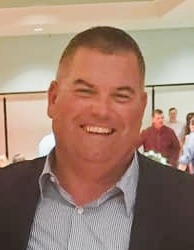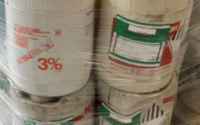The Power of Collaboration: Need for Hazmat Task Forces in Disaster Response
Mike Bloski

In the aftermath of a natural disasters, the role of first responders cannot be overstated. Among these brave men and women, local hazardous materials technicians often find themselves at the forefront of local rescue and recovery efforts working local needs. The long term scale of destruction, the number of casualties, and the complexity of coordinating resources can quickly overwhelm even the most well-prepared departments that include technical rescues and hazmat responses. This is where concept of hazmat task forces come in. By pooling resources, expertise, and manpower, a mission-specific task force can respond more effectively to these extraordinary situations.

Unprecedented Challenges: To meet the unique challenges of teams focused on specific incidents, the state of Florida has developed specialized hazmat task force model capable of working together with local responders to address specialized responses. The planning started in 2018 with the first test of a small hazmat task force sent to the Florida panhandle after Hurricane Michael impacted the area. Under the direction of Chief Matt Marshall, a taskforce was rapidly created to address hazmat issues in the region which had only three localized teams over a 200-mile area. During that deployment, Chief Marshall was checking on local Tier II location found a business that had lost power critical to proper storage of chemicals. This was identified and addressed. With lessons learned in Michael in 2020, the state Florida Hazardous Responders (FLHAR) drafted a plan to develop a specialized taskforce for state teams to stage in the disaster area and provide specific response options. Developing this plan, a few objectives were created to address the task-force needs.

Resource Management: The two main concepts were a devoted hazmat liaison to work with local EOC functions. Their job functions under ESF-10 were to coordinate resources with mutual aid agreements in place, define the mission, support logistical support and developing operational daily planning. The next stage was responder based with the formation of a Rapid Needs Assessment Team (RNAT). The primary focus was area staged recon/ response team devoted to only to hazmat related incidents. That team was composed of task force leader, hazmat technicians (8-12), engine company (4 personnel at operations level), a water tender (2 personnel at operations level), and ALS rescue (staffed with tox medics).
Collaboration and Communication: Collaboration and communication are essential for a hazardous task force to be successful. The task force needs to cooperate with other groups, exchanging resources and information as needed. When not reacting to local hazardous incidents, the main mission comprised multiple tasks, such as in-person interactions with Tier II facilities for well-being assessments and haz-waste scouting/identification. Containers were identified, evaluated, GPS-marked, and the location was forwarded to the state environmental department for disposal and processing.

Real-World Success Stories: In September 2022, Hurricane Ian made landfall in southwest Florida as a devasting storm to an urban area. The state created three large rapid response hazmat task forces that deployed to the area and operated under ICS but independent to accomplish the requests for response. After 14-days, three counties had been accessed and operations could be down-scaled to focus on critical impacted areas. A team was deployed with 8 personnel and focused on the hardest damaged area after US&R operations had made primary evaluation of hazmat located.

That team continued follow-up of those locations. While conducting hazmat assessments as our primary mission, 145 containers of hazardous materials were observed and marked using GIS mapping. This information was collected daily and passed on to the local EOC. This was accomplished while responding to local hazmat incidents that included flaring LPG containers and natural gas leaks. As an area (16 square miles) was covered, that team was able to make personal contact with citizens aid in humanitarian assistance. We were also available to answer questions from the public relaying information on disaster relief. A special emphasis was placed on electric vehicles and lithium powered batteries devices with storm water exposure. This team was equipped for UAS/Drone operations and were able to create on-site maps to forward to the EOC on impact. Using drones, we were able to fly lower that aircraft and able to quickly assess incidents as reported such as fuel leaks for boats off shore.

Lessons Learned: A formal AAR was created and passed onto the state about the operations conducted after Ian. In short, these are areas for improvement: The need for task force self-sustainment in theater. The taskforces were staged with success in established FEMA assembly areas. The quick need for established local radio and points of contact. This was aided by local departments. The additional room for PPE, as a hazmat team carrying extra logical equipment to support the mission, we had to be creative on storing it for rapid response. The need for a quick-attack vehicle, we needed a smaller off-road vehicle to access some areas. This was provided by local EM and was 100% needed as we had larger squad vehicles that could not fit down local streets with large debris piles.
Conclusion: When it comes to disaster response, hazmat task forces are an invaluable and essential tool. These task forces, another potent weapon in the local ICS’s toolbox, may handle the particular difficulties of area incidents by assembling specialized teams and resources. They offer specific response services that could fall outside the control of the on-site disaster response team. Planning, cooperation, and communication have allowed Florida to successfully place a package to meet these demands.




